One of the many highlights of my second trip back to Kyrgyzstan was spending 3 days living the yurt life on the southern shores of Issyk Kul Lake. I had just come off a 3-day horse trek so I was pretty content to just chill out at camp, feast on delicious Kyrgyz food in the communal tent, and enjoy a little walk along the lake, but it wasn’t long before I was lured away to go sightseeing; it turns out there are some pretty cool half-day trips that take you through forests, valleys and canyons!! The following is my mini travel guide to Issyk Kul’s south shore with a bit of adventuring and a bit of chilling on the itinerary.

Things to Do, See & Experience visiting Issyk Kul
Stay at a lakeside yurt camp
One of my favourite things about visiting Issyk Kul’s south shore was staying at the Bel Tam Yurt Camp. Their yurts were set right on the lakeside, which meant that every night we would fall asleep to the sound of crashing waves.
When it’s windy out, Issyk Kul sounds a lot more like an ocean than a lake, so it was super soothing going to sleep at night. Add the fact that there was no electricity in the yurt, and I was out within minutes!
Another bonus is that the weather was a lot more temperate by the lake, so it wasn’t quite as cold at night as some of the other places we visited – one duvet during the summer months was more than enough.
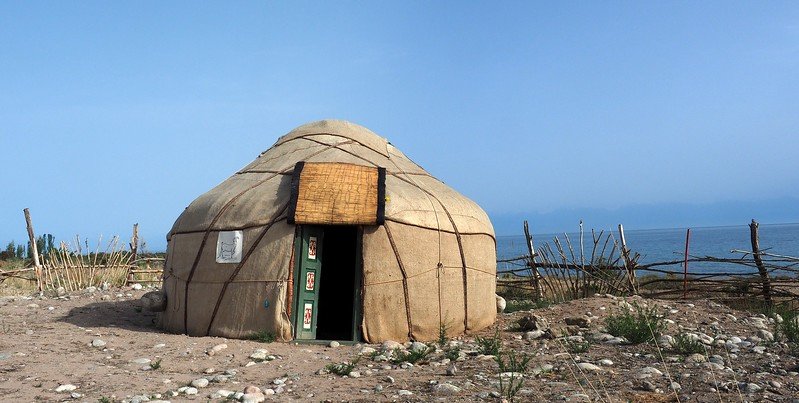
However, the highlight at Bel Tam Yurt Camp was the communal feel. Every night at dinnertime, all the guests would gather in the main yurt where there were tables set up in a horseshoe formation.
Here, we would all dine together while swapping stories about where we had been in Kyrgyzstan and where we were going next. There was always an international crowd that ranged from backpackers in their late twenties to lifelong hikers in their seventies, so we would all hang out long after dinner.
Visit the Fairy Tale Canyon
One of the excursions we took from Bel Tam Yurt Camp, was a half-day visit to Skazka, also known as the Fairy Tale Canyon.
The canyon is home to a red sandstone landscape, where wind and water have carved bizarre sculptures and rock formations.
There is one area where it looks like a carpet has been rolled out over the Earth and you get these rich red, ochre, and brown strips of colour running across the hills. It’s a mystical landscape and it’s a fairly easy hike, where you decide how far and how high you want to climb.
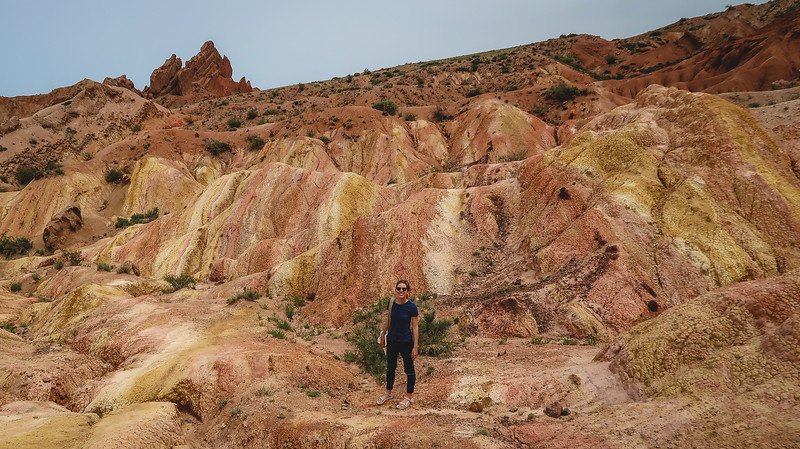
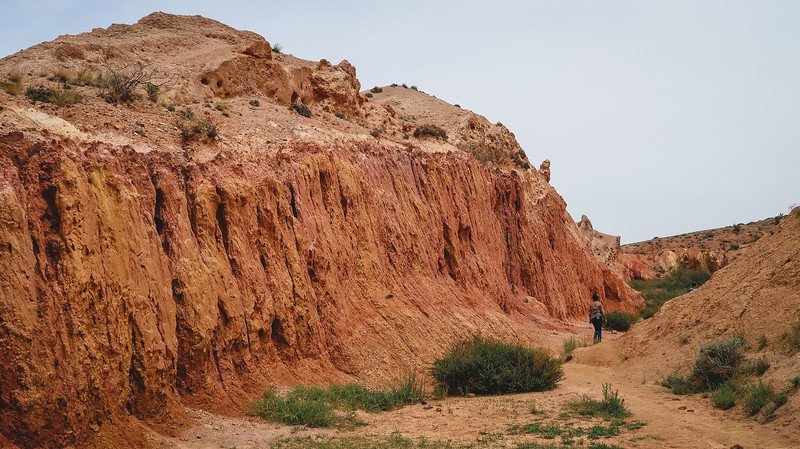
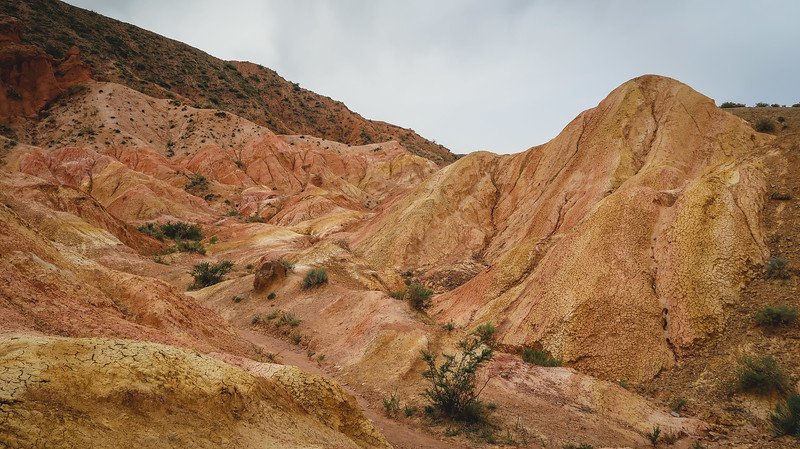
Hike to the Seven Springs at Manjaly-Ata
On that same day, we visited Manjaly-Ata, a sacred site for Muslims that is home to a series of springs which are believed to cure illnesses. There is a path that winds through the valley taking you up, down, and around the hills, sometimes through lush stretches of greenery and other times through arid, cracked earth – the landscape changes so quickly!
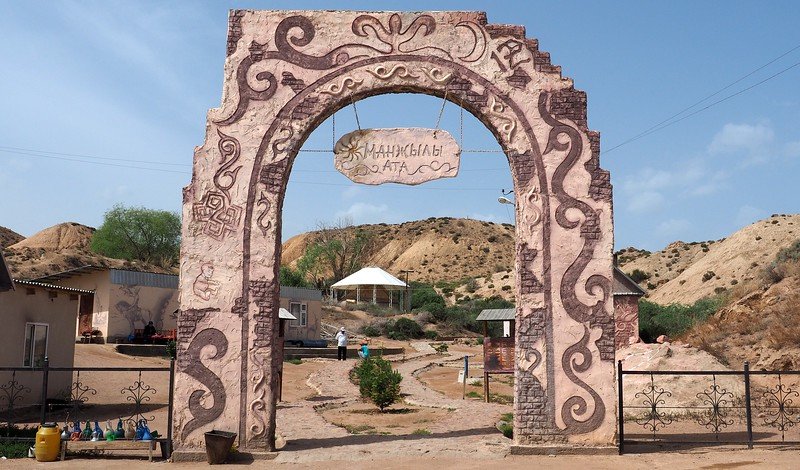
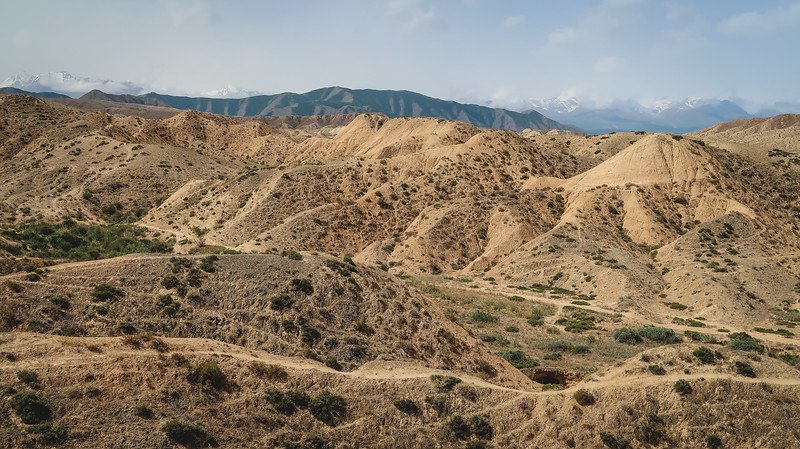
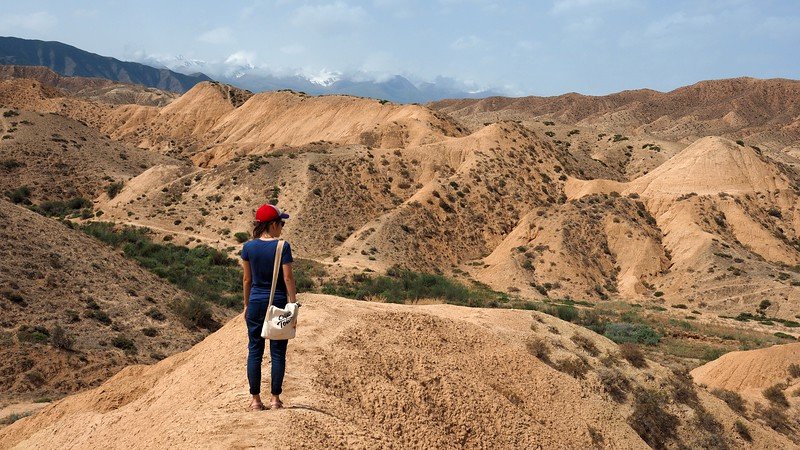
Along the way, small trails break away from the main path, leading down to springs that are said to cure everything from poor eyesight to digestive issues, however, our guide explained that the most famed spring of them all is one for couples who can’t have children. At each of these springs, we found cups for pilgrims to drink from.
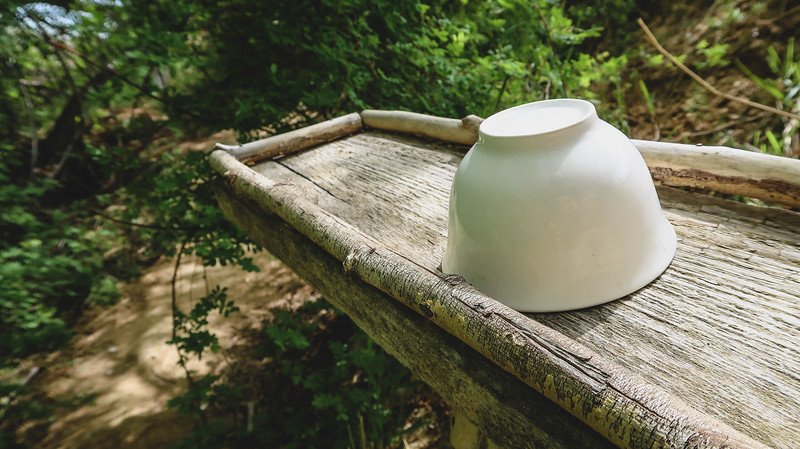
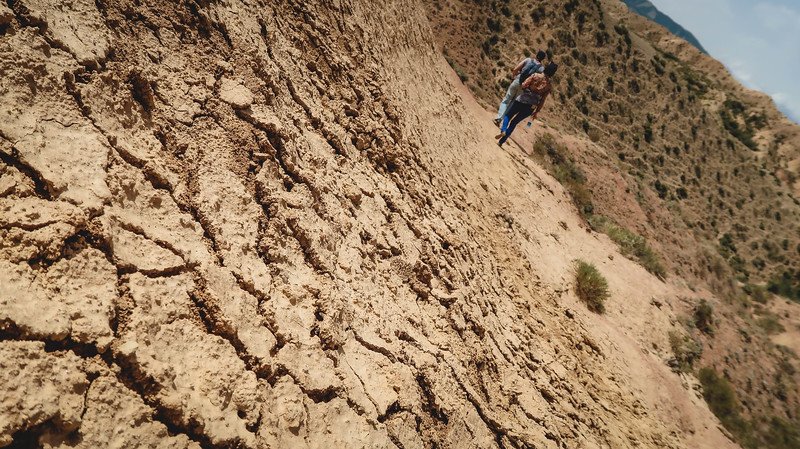
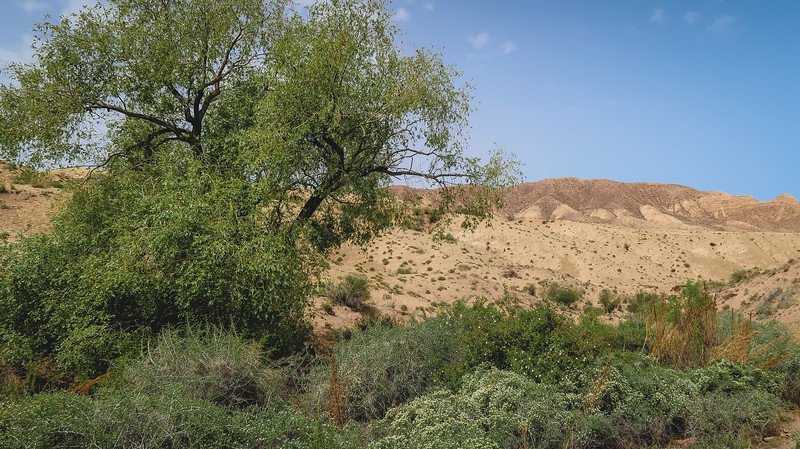
All that being said, this site is open to both pilgrims and visitors, so don’t let that keep you away. On our visit, we met a family of hikers and a group of scholars visiting religious sites across Central Asia, so it’s worth a visit even if you’re not planning to drink from any springs.
Learn how to build a yurt from the pros
This being my second trip to Kyrgyzstan and having stayed in plenty of yurts, it was time to see what goes into building one!
For this, we made our way to Kyzyl-Tuu, a small village that is renowned for its high-quality hand-crafted yurts. These yurts are created by one single family from start to finish, and they have such a high reputation in the business that they get orders from all over the world, with each yurt taking one full month to complete.

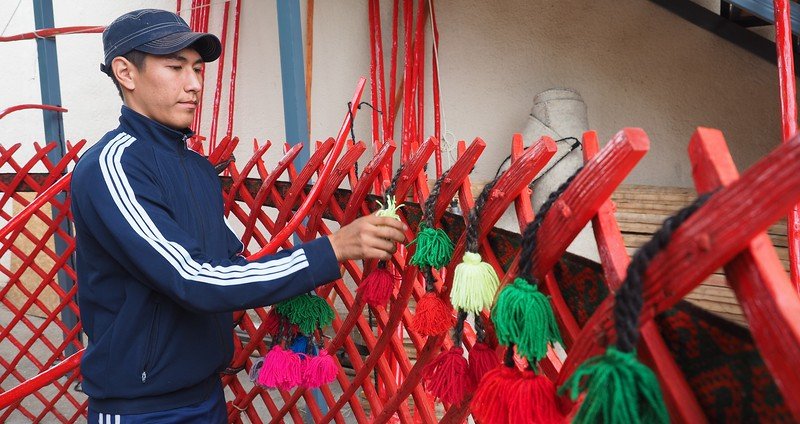
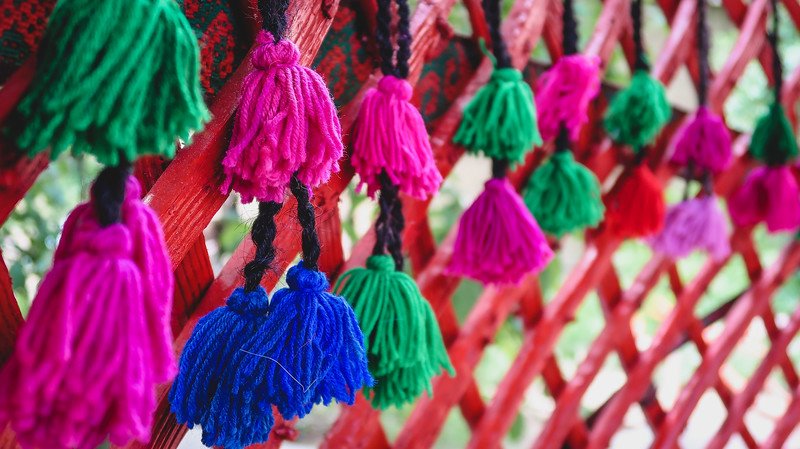

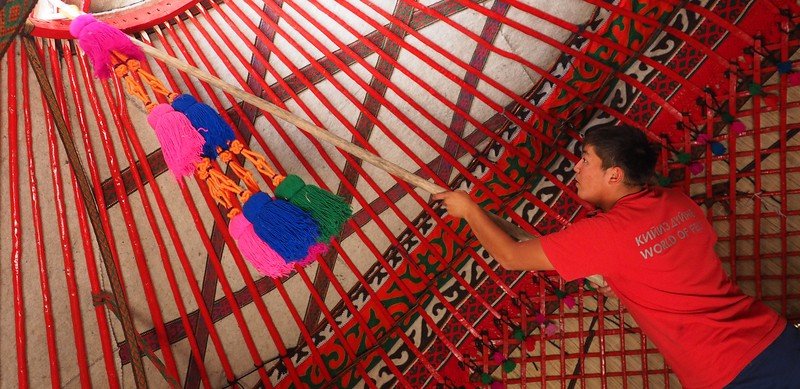
At the workshop, we learned about the whole yurt-building process, from steaming the wood to give it its bend, to the handmade felt patterns designed by the matriarch of the family.
We even got involved in the yurt decorating process towards the end, because it’s not just about functionality – your yurt’s got to look good as well! And in true Kyrgyz fashion, at the end of the workshop, we were invited to have tea with the family.
Go on an easy day trek
Having just completed a 3-day horse trek from Bokonbayevo, we weren’t looking to do anything too strenuous, so we signed up for the Shatyly day trek. We met up with our guide in town, drove out to the Bozsalkyn Jailoo, and picked up our horses from one of the yurt camps in the valley.
We were lucky enough to get the same guide we’d had on our previous horse trek in Kyrgyzstan, so we were glad to see him again, and even more thrilled when we discovered he had packed a picnic for this outing.
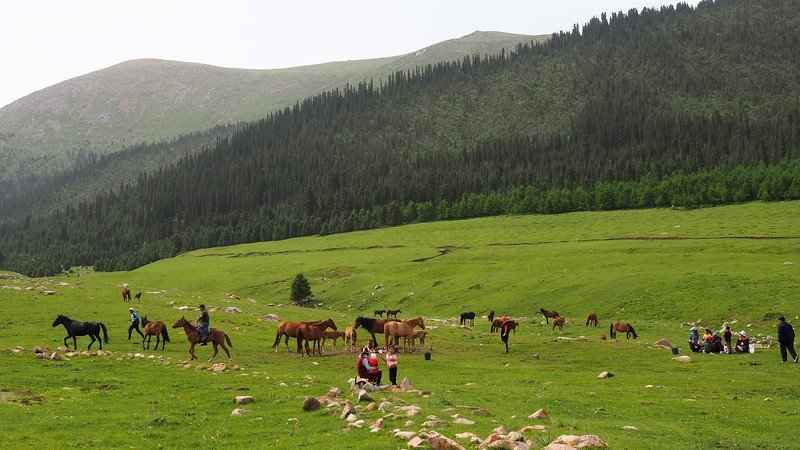
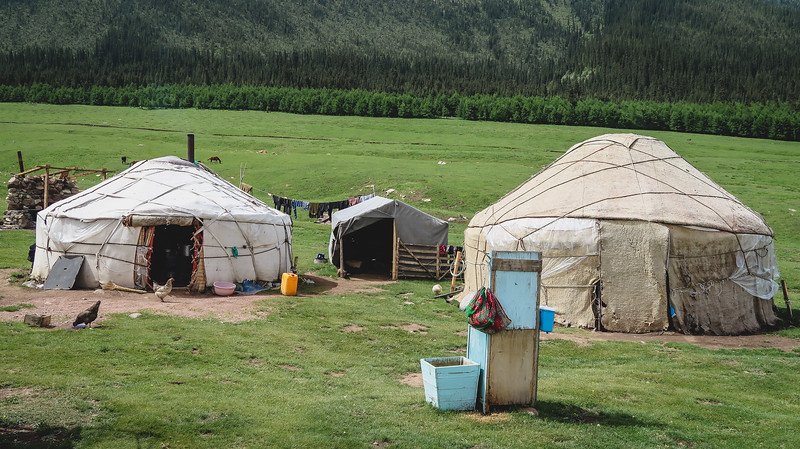
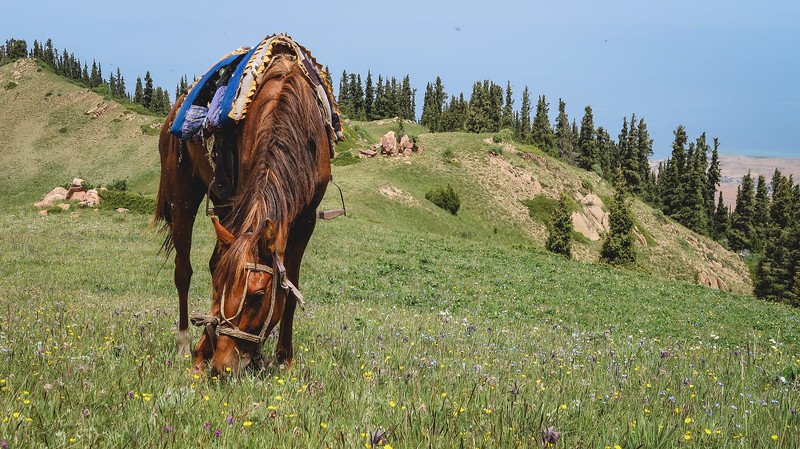
Once we were all saddled up, we trekked to the first lookout point where we had views of Issyk Kul Lake and Bokonbayevo, and then we came back down and trekked through the forest and up another mountain to a different lookout point where we spread out a picnic consisting of cherries, bread, juice, cookies and more. Even the horses got a snack with all the wildflowers in bloom.
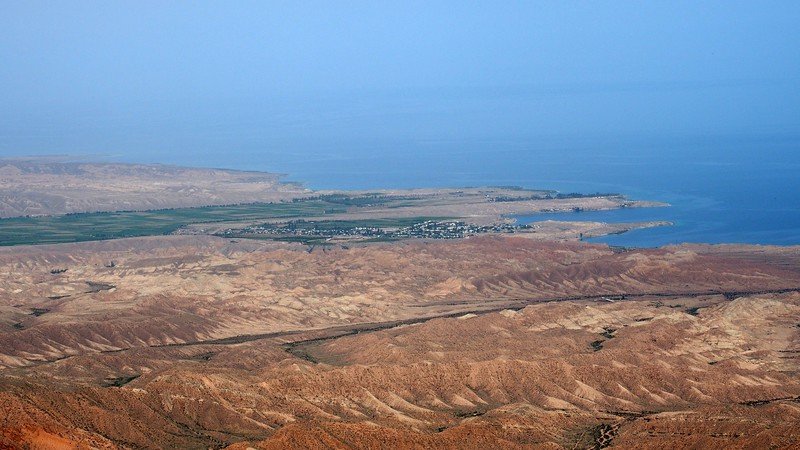
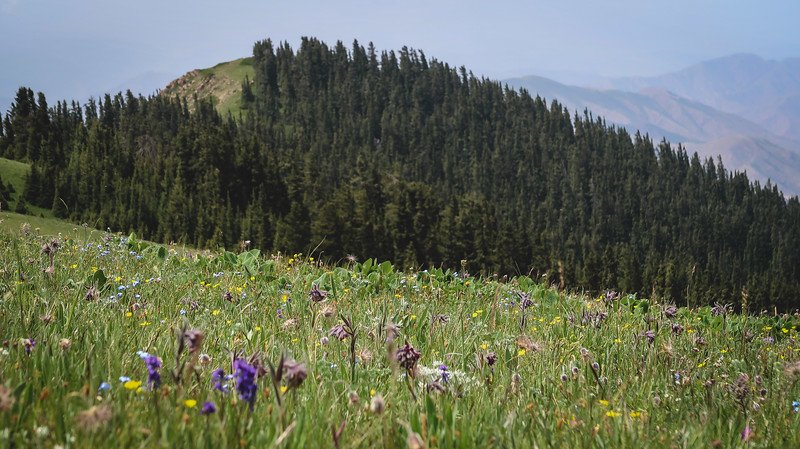
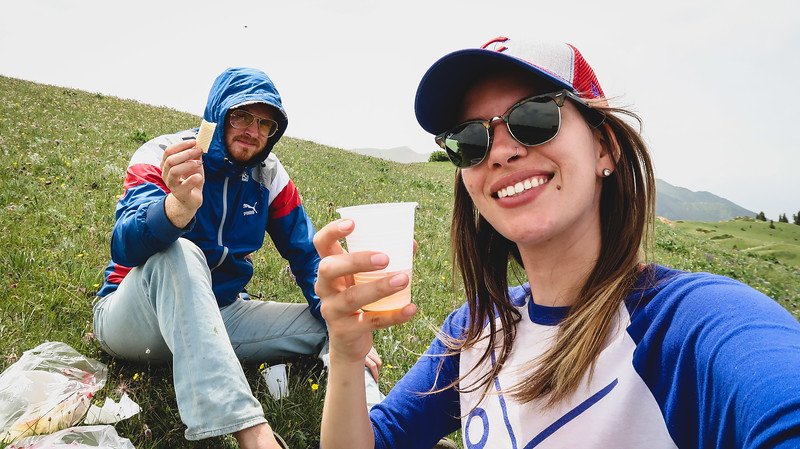
You can arrange a day trek along the South Shore here.
Learn about the tradition of eagle hunting
Salbuurun is the word used to describe traditional Kyrgyz hunting culture, a practice that encompasses hunting on horseback with the use of golden eagles, taigans (a Kyrgyz hunting dog), and bows and arrows. This is a tradition that was nearly wiped out during the Soviet era, when nomadic practices were suppressed, but it’s slowly making a comeback as people are looking to reconnect with and celebrate their culture.
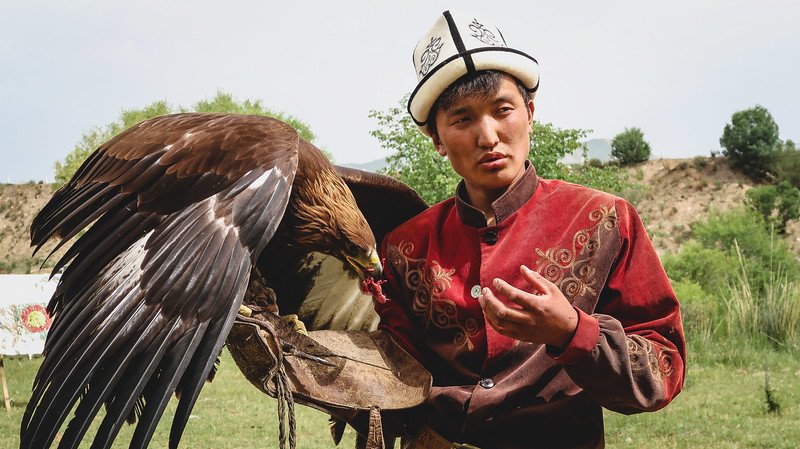
If you’re not travelling in Kyrgyzstan during the World Nomad Games or one of the smaller regional festivals, it can be tricky to see some of the nomadic traditions the country is known for, but this is where The Salbuurun Foundation comes in. While hunters would typically be looking for foxes and hares, the Salbuurun Foundation puts on demonstrations using furs and stuffed animals, so no live animals are hunted.
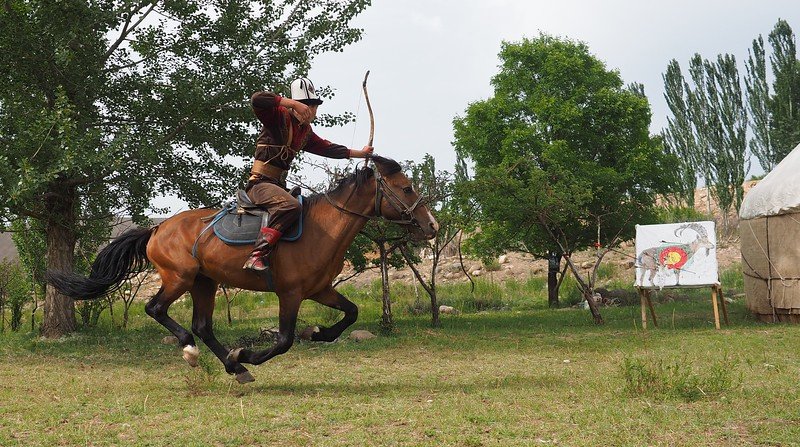
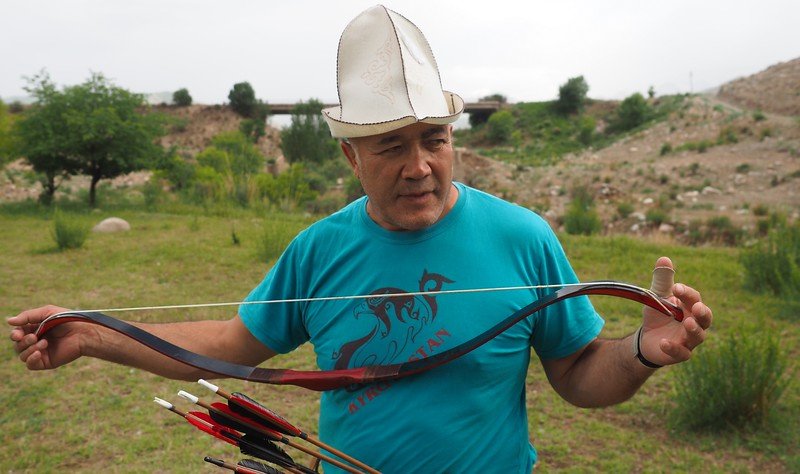
I know this will be a sensitive subject for many people, but hunting with golden eagles is a Central Asian tradition that dates back millennia, and the foundation tries to teach visitors about its culture and explain the bond between a hunter and his eagle (a hunter will typically only have 2 eagles in his lifetime, raising them from the time they’re a young chick and eventually releasing them back into the wild), so if this is something you’re interested in learning more about, you can attend one of their demonstrations.
Go in search of ancient petroglyphs
So this excursion kind of tanked when it started pouring buckets, so while there are lots of ancient petroglyphs you can hike to, we had to readjust our plans.
Rather than continuing on the grand petroglyph walk we had planned, we ended up at the Jaichy Yurt Camp, where you can see balbals, carved stone heads used to remember ancestors by.

The man who runs this yurt camp also happened to be an artist, so aside from the balbals in his backyard, he also showed us some of the modern petroglyphs he had created as well as some cool wood carvings and handmade furniture he’d designed himself.
It may not have been what we had in mind when we left camp for the day, but it turned out to be a really fun outing and at the end, he invited us in for tea and bread, as you do! Oh, and we learned that he organizes hikes to a glacier lake not far from his camp, so if you somehow end up there, it’s worth inquiring about that.
Chill out on the shores of Issyk Kul
And then, there was plenty of chilling on the shores of Issyk Kul Lake…quite literally! I think it was a bit too early in the summer season to go for a swim – Sam, who doesn’t mind the cold, only made it up to his knees! – so I was perfectly happy to just enjoy some quiet sunset walks along the shore. The yurt camp we were staying at also had kayaks available for guests, so that’s another option.
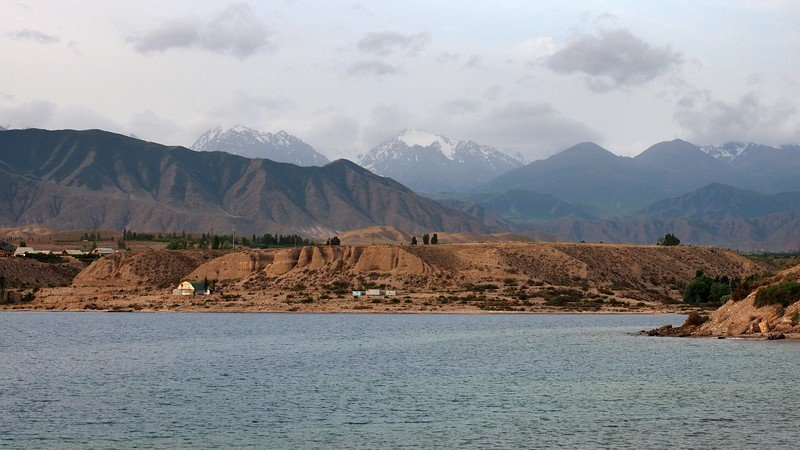
Additional information for Issyk Kul
- If you’re planning to travel along Issyk Kul Lake’s south shore, you’re going to pass through the town of Bokonbayevo, which is the gateway to many of the tours and activities in this area. Feel Nomad offers various tour options across Kyrgyzstan, including Issyk Kul, so you can check them out online. Alternatively, you can visit Destination South Shore or the CBT Bokonbaevo offices for suggestions of things to do and help planning your itinerary.
- Regarding accommodations, I stayed at the Bel Tam Yurt Camp just 15 minutes outside of Bokonbayevo, which I would highly recommend as it was an amazing spot with a great vibe, however, if you’d prefer a bit more comfort, there are hotels and guesthouses in the town.
- There aren’t very many restaurants in Bokonbayevo, so for convenience’s sake, we often ate at our yurt camp. Most guesthouses also offer a meal service, so it’s just a matter of letting them know the day before. Alternatively, you can purchase snacks and fresh produce from the local market for some easy do it yourself meals.
- Travel insurance should always be a must, but even more so when you’re going to be travelling so remotely and taking part in adventure and outdoor activities, so don’t leave home without it!

The South Shore Playbook: How to Plan, Pack & Pace Your Issyk-Kul Escape
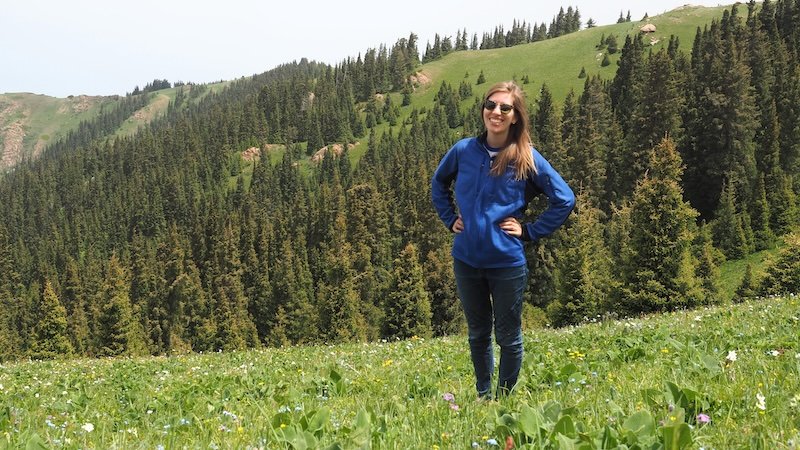
Getting There (and around) without Guesswork
- From Bishkek → Bokonbayevo (gateway town): 5–6 hours by private car, ~6–7 hours by shared taxi or marshrutka via Balykchy along the M41 (south-shore road). If you’re heading straight to Bel Tam or another lakeside yurt camp, ask your driver to continue 15–20 minutes east of town.
- Why the south shore? Fewer resorts than the north side, bigger views of the Tian Shan, and easy half-day hops to Skazka (Fairy Tale) Canyon, Manjaly-Ata (Seven Springs), Kyzyl-Tuu (yurt workshops), and Shatyly meadows.
- Local wheels: Your camp/guesthouse can arrange drivers by the half-day (best value if you’re 2–4 people). Marshrutkas do run, but you’ll spend more time waiting than wandering.
- SIM & signal: Megacom, Beeline and O! all work along the shore and in town; service drops in canyons. Download offline maps before you leave Bishkek.
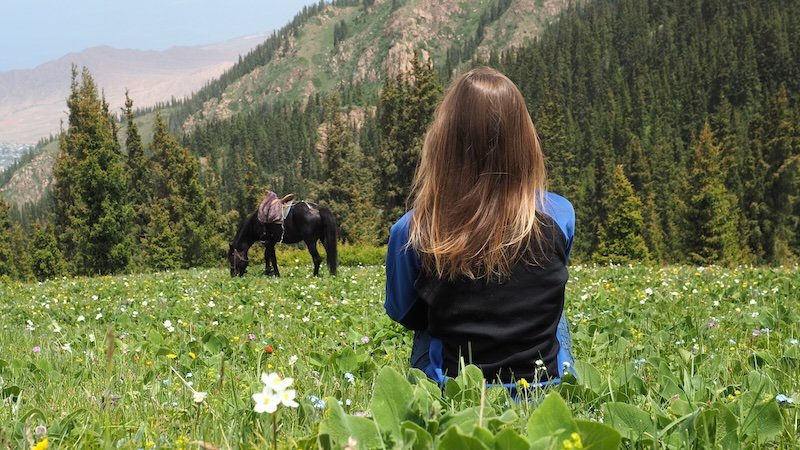
Two Done-For-You Days (Row-by-Row)
Day 1: Canyons, Springs & Shoreline Golden Hour
| Time Block | Where | Do This | Little Bonus |
|---|---|---|---|
| Sunrise (6:00–7:00) | Lakeside | Barefoot beach walk, watch the range blush pink. | Fill a thermos the night before for hot tea at the water’s edge. |
| Breakfast (7:30–8:30) | Camp yurt | Fresh bread, eggs, jam, kasha. | Ask for a packed fruit/bread bag for later. |
| Morning Burst (9:00–12:00) | Skazka Canyon | Wander ridgelines, pick your own mini-trail. | Light gaiters or high socks keep sand out of shoes. |
| Quick Lunch (12:30–1:15) | Bokonbayevo | Simple café or bakery haul on a bench. | Try manty (steamed dumplings) if you spot them hot. |
| Afternoon (1:30–3:30) | Manjaly-Ata | Valley loop to several springs; go slow and quiet. | Dress modestly; step aside for pilgrims at each spout. |
| Reset (4:00–5:00) | Camp | Tea + 20-minute nap. | Dry damp socks in the sun before the temp drops. |
| Golden Hour (5:30–7:00) | Shore | Kayak or camera stroll; mountains mirror in the lake. | Keep your scarf handy—the wind can flip on a dime. |
| Evening (7:30–) | Communal yurt | Dinner + story swap with new friends. | Bring a small phrase list to trade greetings in 3–4 languages. |

Day 2: Horses, Craft & Nomad Skills
| Time Block | Where | Do This | Little Bonus |
|---|---|---|---|
| Morning (8:00–12:30) | Shatyly Trek | Half-day ride to twin lookouts above Issyk-Kul. | Pack cherries/almonds for a saddle-snack; cinch check before descents. |
| Lunch (1:00–2:00) | Camp or town | Hearty soup + bread; hydrate. | Ask for ashlyan-fu if you see a Dungan stall—it’s cold, spicy, perfect. |
| Mid-PM (2:15–4:00) | Kyzyl-Tuu | Yurt-making demo: steam, bend, lash, decorate. | Learn the names: kerege (wall), uuk (roof poles), tunduk (crown). |
| Late PM (4:30–6:00) | Bokonbayevo steppe | Salbuurun intro: archery on horseback, eagle-handler Q&A. | Zoom with your feet, not your drone; birds spook easily. |
| Night (after 9:30) | Shore | Stargaze—little light pollution = Milky Way treats. | Tripod + headlamp with red light keeps eyes night-ready. |
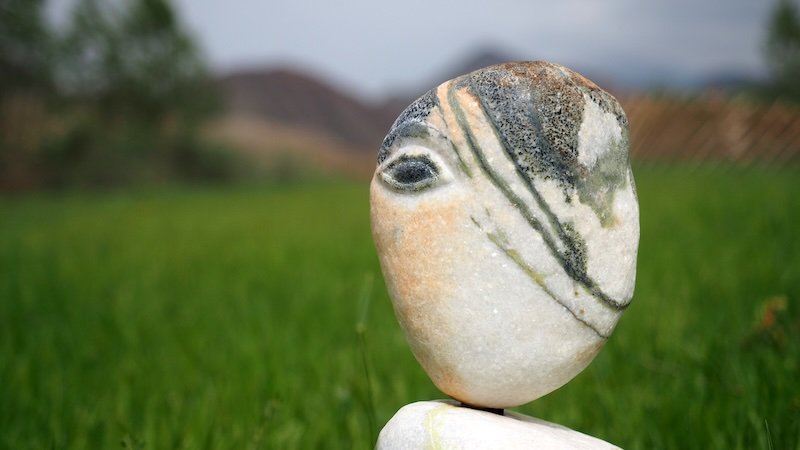
Seasons & What to Pack (Mountain-Lake Edition)
| Season | What it feels like | Pack Emphasis |
|---|---|---|
| Spring (Apr–May) | Snow still on peaks; shores thaw; sun + sudden rain. | Light down or fleece, waterproof shell, trail shoes, warm beanie, quick-dry pants. |
| Summer (Jun–Aug) | Warm days, cool nights; water is brisk; windy afternoons. | Sunhat, UV sunglasses, breathable layers, wind-blocking jacket, swimsuit (for brave souls), lake shoes. |
| Autumn (Sep–Oct) | Amber grass, crisp air, clearest skies; cold evenings. | Merino base, midweight fleece, wool socks, gloves, thermos for tea. |
| Winter (Nov–Mar) | Silent beauty; serious cold; limited services. | Heavy coat, insulated boots, microspikes if icy, hand/foot warmers, thick sleeping socks. |
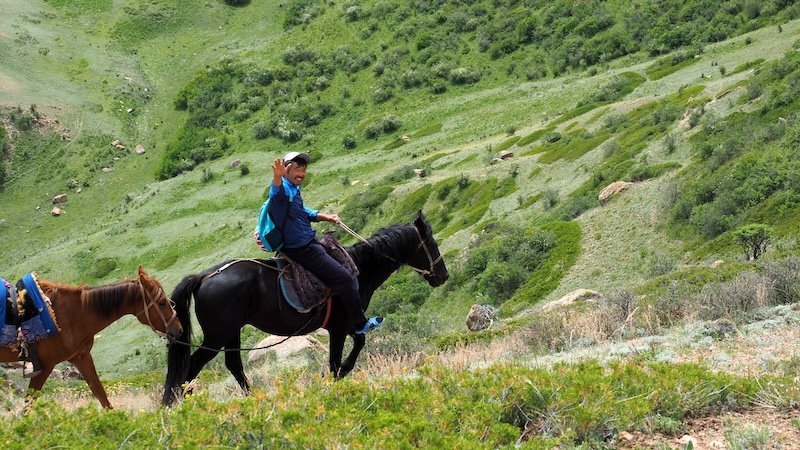
The Smart Pack List (beyond the obvious)
- Warmth system: merino base + fleece + wind/water shell. Nights by the lake bite even in July.
- Feet: trail runners or grippy hikers, a pair of cozy camp socks, and sandals/water shoes for the pebble beach.
- Sleep help: earplugs (wind flaps yurt felt), eye mask (early dawn), optional silk liner if you run cold.
- Power & light: headlamp (red mode), two power banks, splitters if you’re sharing a single camp outlet.
- Sun & wind: SPF 50, lip balm, scarf/buff for dust in Skazka and gusty shore walks.
- Hydration: 1–1.5L bottle; iodine/chlorine tabs if you’ll refill from springs (most camps boil water for you).
- Camera bits: microfiber cloth (dust!), wide lens for skies + tele for eagles, small tripod for star shots.
- Tiny med kit: altitude-mild lake (≈1600 m) but still: ibuprofen, antihistamine, blister care, rehydration salts.
- Gifts: a tiny pack of tea or sweets for hosts goes a long way in villages.
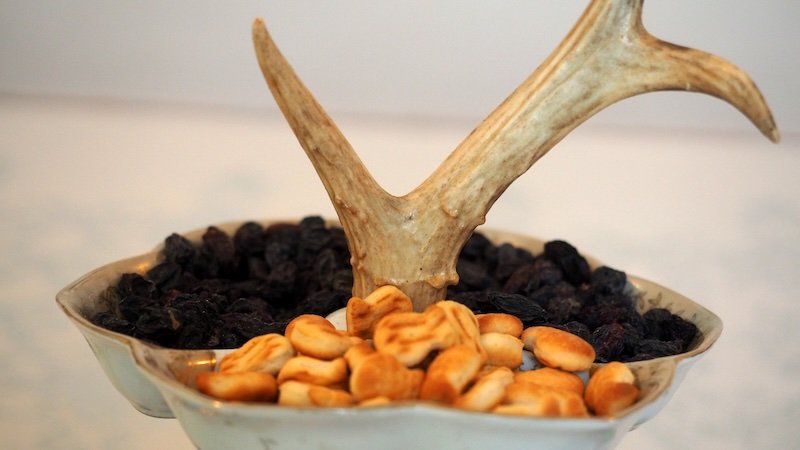
Food, Tea & Being a Good Guest
- Communal dinners: arrive on time, wash hands at the basin outside, remove shoes at the yurt door, and accept at least a sip of offered tea (chai)—it’s hospitality, not a beverage.
- What you’ll eat: brothy soups, stewed meats, rice or noodles, heaps of bread and jam, salads with dill and cucumber. Vegetarian? Say it early—most camps can adapt with eggs, beans, and veg.
- Market forage (Bokonbayevo): tomatoes cucumbers herbs in summer, breads still warm by late morning, seasonal fruit (cherries, apricots). Stock snacks for outings; distances can be deceiving.
- Try once: kymyz (fermented mare’s milk)—a sip is a cultural hello. Not your thing? A smile and “rahmat” (thank you) is still gracious.
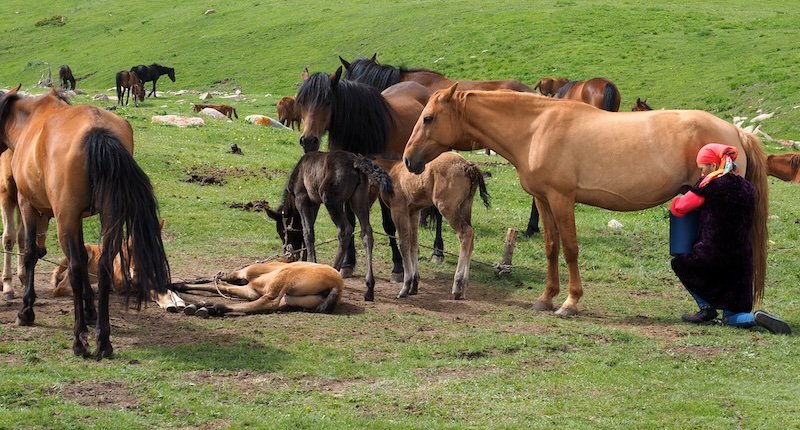
Prices & “Is This a Good Deal?”
- Private room in guesthouse: budget to mid-range, very reasonable.
- Yurt camp (half-board or full-board): typically includes breakfast + dinner; add a modest fee for lunch/packed lunches.
- Half-day driver (canyon/springs loop): great value split among 2–4 people.
- Shatyly trek (guide + horses): priced per hour or per half-day; confirm whether picnic is included.
- Salbuurun demo: set fee for the group—ask your host to bundle with transport.
- Hot shower: sometimes token-based—bring small notes/coins.
- Cash: Bokonbayevo has ATMs but they can run out; carry enough for tours + tips.
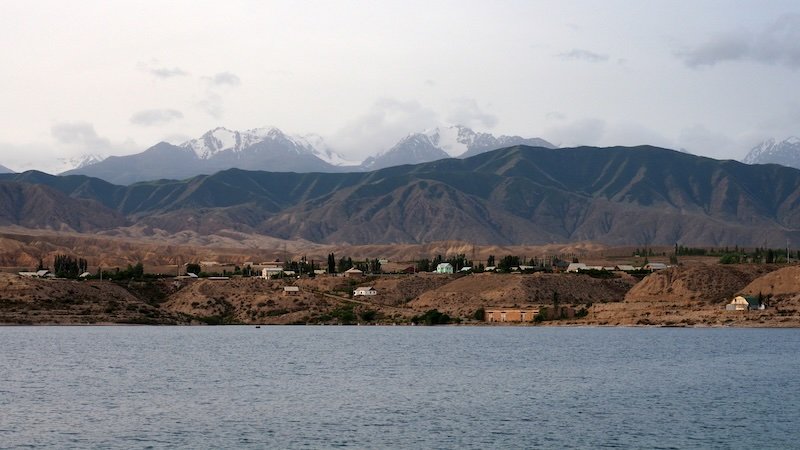
Issyk Kul Lake Frequently Asked Questions
When is the best time to visit the south shore of Issyk-Kul?
Late June to early September brings the warmest days, the greenest jailoos (summer pastures), and the widest choice of yurt camps and activities. Nights are still cool because the lake sits around 1,600 meters, so you’ll want a fleece year-round. May and October are wonderfully quiet with crystal-clear skies, but expect colder evenings, brisk winds on the shore, and fewer services.
How do I get from Bishkek to Bokonbayevo and the lakeside yurt camps?
From Bishkek’s western bus station you can take a marshrutka or shared taxi to Bokonbayevo via Balykchy along the M41; plan on 6–7 hours with stops. Private cars shave that to 5–6 hours and are easiest if you’re carrying camping or photo gear. Once in Bokonbayevo, most camps can arrange a short pickup to their lakeside location; message them the day before so they can time it with your arrival.
Can I swim in Issyk-Kul and how cold is the water?
Issyk-Kul never freezes thanks to its salinity, but it’s still a mountain lake. In July–August the surface can feel refreshing on calm afternoons and bracing in the morning; in June and September it’s cold enough that most travelers opt for quick dips or kayaks instead of full swims. Water shoes help on the pebble beaches, and it’s smart to stay close to shore—winds can whip up whitecaps quickly.
Do yurts have electricity, heat, and private bathrooms?
Expect simple comfort rather than hotel amenities. Many camps run solar or generator power for lights and charging during certain hours and offer hot showers on a schedule. Yurts are insulated with felt and come with duvets; if you run cold, ask for an extra blanket or bring a lightweight silk liner. Bathrooms are usually shared and spotlessly maintained; pack a headlamp for nighttime trips.
What should I wear and pack for a few days on the south shore?
Think layers you can peel on and off: a merino base, fleece or light down, and a wind/waterproof shell. Sturdy trainers or hikers for dusty canyons, sandals or lake shoes for the shore, a hat, SPF 50, lip balm, and a buff or scarf for wind and dust. Add a reusable bottle, thermos, headlamp, power bank, and a small first-aid kit with blister care. Photographers will want a microfiber cloth—the dust is real.

Is it easy to eat vegetarian or with dietary restrictions?
Yes, with a little notice. Most camps and guesthouses cook family-style meals and are happy to prepare veg plates—think salads, fried or stewed vegetables, eggs, fresh breads, soups, rice or noodles. Let your host know a day in advance if you avoid meat, dairy, or gluten so they can shop accordingly. In town, cafés are basic but you can always stock fruit, nuts, and produce at Bokonbayevo’s market.
How do I arrange excursions like Skazka Canyon, Manjaly-Ata, yurt-building, horse treks, or eagle-hunting demos?
Two easy options: ask your camp/guesthouse to bundle a driver, guide, and entrance fees into a half-day price, or drop by Destination South Shore/CBT Bokonbayevo in town to mix and match activities. Drivers wait while you explore, which is ideal for Skazka + Manjaly-Ata on the same day. For horse treks, confirm the route length and whether a picnic is included.
What etiquette should I follow at sacred sites and in local homes?
At Manjaly-Ata, dress modestly (covered shoulders and knees), move quietly, and don’t block access to the springs; drink only if you wish. In yurts, step over the threshold, remove shoes if asked, and accept a cup of tea as a sign of hospitality—even a sip is polite. Ask before photographing people, and when in doubt place your right hand lightly over your heart and offer a smile and “rahmat” (thank you).
Is there mobile signal, Wi-Fi, and places to charge?
Signal along the shore and in Bokonbayevo is generally good on major networks, though canyons and valleys have dead spots. Some camps offer limited Wi-Fi near dining yurts; assume it’s best for messaging, not big uploads. Bring two power banks and a multi-USB splitter so you can charge phones, watches, and cameras during generator hours without monopolizing outlets.
How much cash should I carry and can I pay by card?
Carry enough cash to cover two to three days of food, activities, and transport because card acceptance is rare outside cities and rural ATMs can run out. Bokonbayevo has an ATM; withdraw when you see it working and keep small notes for showers, tea houses, and tips. Your camp can quote typical per-person costs for drivers, demos, and treks so you don’t over- or under-budget.
Is the area safe for solo travelers and families?
Yes—south-shore travel is friendly and low-key. Solo travelers appreciate the communal dinners where it’s easy to meet others; families love short horse rides, gentle shore walks, and the hands-on yurt workshop in Kyzyl-Tuu. Common-sense tips apply: keep valuables zipped away, watch kids near the water and on canyon ridges, and avoid open-water kayaking when the wind picks up.
Can I fly a drone or photograph the eagle demonstrations?
Use discretion. Winds off the lake can flip small drones, and flying near eagles, livestock, or sacred sites is a hard no. Ask handlers if photos are okay during salbuurun demos and keep a respectful distance—telephoto lenses beat crowding the bird. For landscapes, sunrise at Skazka, late-afternoon shadows at Manjaly-Ata, and blue hour on the lakeshore are the most flattering windows of light.
If you enjoyed this post be sure to check out our Guide to World Nomad Games in Kyrgyzstan.
This trip was made possible in partnership with Discover Kyrgyzstan. As always, all opinions expressed here are my own.

Ahh what an amazing adventure!! I would love to stay in a Yurt camp. Beautiful photos too! 🙂
I hope you get to! Yurt camps are a quintessential part of travel in Kyrgyzstan. 🙂
The yurts looks like so much fun. Krygyzstan is full of fun. The pictures are amazingly captured. Thanks for sharing.
Learning about yurt building sounds like a pretty neat adventure. The landscape there also looks breathtaking – the colors are fantastic.
Hi, i am looking for some information about travelling in Kyrgyzstan. I am from Indonesia, and planning to cover some stories there for national television here. May i ask and discuss some things to you? Such as transportation access, or a guide there? Thank you so much.
Hi Dian, I’d recommend checking out CBT Kyrgyzstan – they’ll be able to offer you up to date info and rates on organizing transportation and hiring a guide for your trip.
Hi Audrey, just wondering how much time you need for the Shatyly Overlook trip? How long is the round trip, including drive from Bokonbaevo? (We’re thinking of doing it in the morning, before heading back to Bishkek.) Thank you!